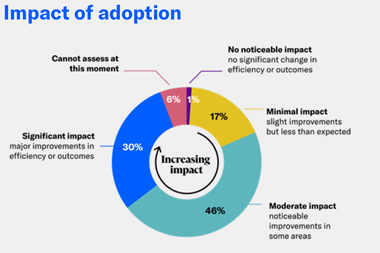How many mergers and acquisitions (M&A) are truly successful? It all depends, of course, on how you define failure. If you classify it as not recouping the premium paid for an acquisition at a later sale, as failing to achieve projected profit and turnover levels, as failing to save the costs projected, or failing to increase shareholder value, then, according to many reports, somewhere between 30% and 80% of M&As are failures.
There is no single factor that stands out as the cause of this. However, there are some common threads, and some steps to take to avoid the pitfalls. It is worth remembering that true mergers are very rare. In most cases, one party will be the acquirer and the other the target. There may be some parts of the target which are better than those of the purchaser, but on the whole there will be a dominant party. That dominant party must act with conviction and implement its integration plan without trying to accommodate too many competing views. The approach that the senior management of the enlarged group must take after an acquisition could fairly be described as a benevolent dictatorship.
Due diligence
One reason given by purchasers for viewing an M&A as a failure, is that they often feel let down by what they have actually acquired. That should not be the case. If the real assets or turnover that the purchaser thought it was buying do not exist, then something may well have gone wrong with the due diligence process.
Due diligence is, or should be, a thorough investigation of the target company, its market and the legal risks associated with acquiring it. Simply requesting information from the vendor is not sufficient. Nor is it realistic to assume that a professional team can be left alone to get on with the due diligence exercise. The purchaser must put together its own senior team, with decision-making powers, which will be responsible for considering the information gathered and distilled by the professional team. This internal team must be an integral part of the due diligence team and must identify to the professionals those issues where problems could arise. After all, the purchaser is likely to know the business and the market place better than the professional team.
A properly conducted due diligence exercise should be extremely wide ranging. It should consider the obvious matters mentioned above - which may include key contracts, property issues, intellectual property issues and cash flow. But it should also consider intangible matters, such as the compatibility of the two cultures. Such matters, by their very nature difficult to measure or review, are often overlooked. But they can cause problems.
A due diligence team can sometimes experience an apparent reluctance on the part of the vendor to disclose information. They need to ascertain the reason for that reluctance early in the process. If it is for reasons of confidentiality, they can put in place agreements or procedures to protect the integrity of the confidential information. However, if there is no apparent reason for the reluctance, they must consider if there is something to hide. They should take special care with information that is disclosed late. Is there something hidden in this information?
Unfortunately, it is almost impossible for a due diligence exercise to uncover a fraud. This is not surprising. If the management team of a target has been able to hide a fraud from its own auditors and internal teams, then it is unlikely that an external team conducting a due diligence exercise will uncover it. This is particularly the case if the people responsible for providing the information to the due diligence team are the perpetrators. In those circumstances, the fraud will only be uncovered when it is too late - after completion of the acquisition. Perhaps the only way for the acquirer to protect itself here is to take the view that if something looks too good to be true then it probably is.
Warranties are inextricably linked to the disclosure exercise. The financial consequences of matters not being as warranted can be covered in the purchase agreement. However, do not underestimate the time, effort and expense needed to prosecute a claim for breach of warranty. Furthermore, pursuing such a claim will divert management away from its main objectives: making the merger work and driving the business forward.
Culture
Many reports suggest that one of the reasons for M&As failing to attain their goals is a lack of cultural compatibility between purchaser and target. Here the purchaser has to identify what it is seeking to acquire. If this is simply a target's assets, or property, or registered patents, a cultural fit is not necessary. If, however, the staff of the target are important, then cultural fit is important. Failure to address people issues can result in the target's principal asset - namely its employees - deciding that enough is enough and looking to further their careers elsewhere.
The problem with a clash of cultures is particularly relevant in cross border mergers. The purchasing company that attempts to impose its culture on the target is then often doomed to failure. For example, the way of working in Sweden will be very different from that in Japan, which, in turn, will be different from that in America. If the purchasing entity is based in the US and tries to impose its way of working on companies in Sweden or Japan, it is unlikely that a merger will succeed without substantial fall out.
Not the whole story?
It is not surprising that target companies will be groomed for sale by their owners to achieve the best possible price. Purchasers should treat financial information supplied to them by a vendor with some care. What may appear initially attractive can turn out to be something of a mess and, indeed, a liability.
It may well be that everything that is warranted is true. However, so much effort may have been put into making the target company temporarily successful that it would be impossible for the success to continue at the same level. If the vendors are employees of the target business, they may just stop trying after the sale, because they have got what they wanted - the purchase price. This, again, points to the importance of conducting a proper due diligence exercise and digging beneath the initial facade that may be presented to a purchaser.
It is often suggested that levels of performance can be sustained by deferring some of the purchase price and tying this to future performance targets. However, this can often be counterproductive. Vendors may well work to achieve their targets and meet them, but this may actually turn out to be against the interests of the greater business. For example, a vendor may resist the purchaser's wish to integrate two businesses if that would prevent him from achieving his targets. This type of deal can often push problems into the future.
Often, it is not the target company which is the problem. Difficulties can arise on the home front. For example, if the purchaser has a relatively small number of executives, all of whom are involved in the acquisition process, there is a real risk that they will take their eye off the ball in relation to their own business. As a result, the sales and general financial performance of the purchasing company may suffer. This may not be discovered until after the acquisition, and it is very easy then to blame the target for the loss. But often the target is the reason and not the cause. It is important during the acquisition and integration process to ensure that the purchaser concentrates not only on the acquisition, but also on running its own business. If necessary, bring in external, independent advisers to assist in the acquisition. Management should not be overloaded - that will only end in disaster.
Integration
Issues surrounding acquisitions do not stop as soon as the ink is dry on the contract. Often this is when the problems begin. At this stage the purchaser and target must attempt to integrate their businesses, employees and culture. The best people to do this are those who were involved in the acquisition, as they know what was discussed.
It can be a problem if the people involved in the negotiations have disappeared from the scene. Many of them will have been external advisers (merchant bankers, accountants, solicitors), who will have moved on to the next deal. Meanwhile the management that was involved goes back to running the core business. So there may not be enough employees left who were involved and who know what issues arose. While the enlarged business may bring in new people, they may not be fully briefed on the post completion integration plans.
Purchasers should pay considerable attention to integration following completion. This is where many acquisitions succeed or fail. It is all very well having great plans, but you need to follow them up. Some of the management team should be tasked with making the integration work. They should not be diverted with other issues and they must be empowered. If possible, those managers should have been involved in the acquisition itself. And they must have access to the right resources.
Purchasers are often ready to pay for expensive lawyers, accountants and corporate financiers to advise on acquisition. That willingness to spend money often disappears following the acquisition. But cutting corners on the implementation of post completion changes can result in major problems.
Communication
The key component of what is being acquired is often the staff of the target company. Without its employees the target company may be worth very little, particularly if a great deal of intellectual capital is held in the minds of key employees. It is essential to involve employees of both target and purchaser in the process as quickly as possible and keep them informed on what is happening. Communicate ideals and aims to both new and retained employees. Failure to do so will mean that they are not committed to the enlarged group. Indeed, employees on both sides may feel that they are no longer valued and are about to lose their jobs. If those feelings continue, even the best managers will not make the business succeed. Your rivals will look to recruit your best staff during the period of uncertainty. If you don't look after your staff, they will leave.
M&As are still the way in which many companies look to grow. Properly investigated and implemented M&As can lead to very powerful groups. However, it is also true that mergers can bring down both target and purchaser. Don't forget this when heading out onto the acquisition trail.
David Smellie is a partner, corporate dept, Davies Arnold Cooper, Tel: 020 7936 2222, e-mail: dsmellie@dac.co.uk
SOME GUIDELINES FOR SUCCESS
ENTERPRISE BILL
The UK Enterprise Bill is now proceeding through Parliament. It includes some changes to the regime for agreeing mergers, although the Office of Fair Trading (OFT) will continue as the initial investigating body, referring cases to the Competition Commission (CC) for further investigation where it considers that this is appropriate. The decisions of the OFT and the CC will be based on a 'substantial lessening of competition' test, with no political involvement. Information about when this test applies will be included in CC guidelines.



















